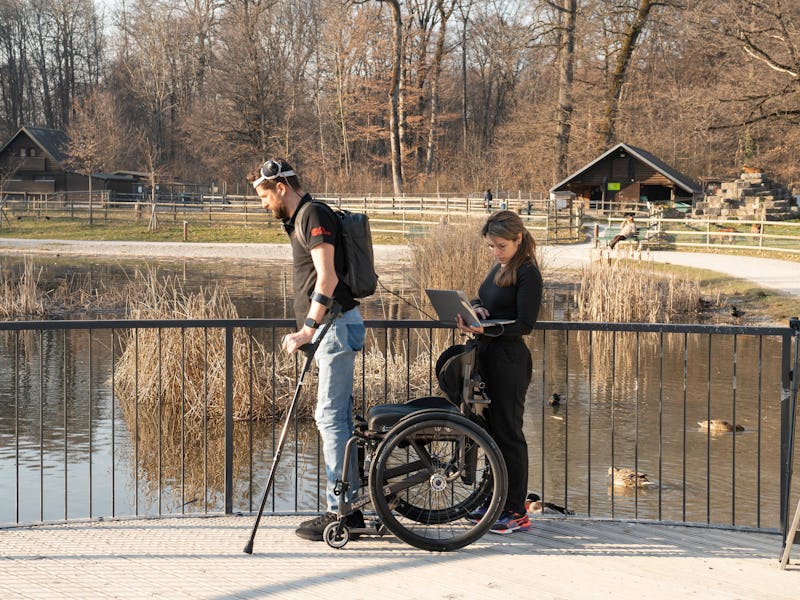A Brain-Computer Interface Just Helped a Paralyzed Man Walk Again
Another promising milestone for BCIs.

There’s currently no cure for paralysis. But recent scientific endeavors show that we’re on the brink of revolutionizing treatment for people with severe spinal cord injuries.
When patients become paralyzed due to an injury, the neurological connection between their brain and limbs becomes irreparably severed. So one team of researchers designed a way to bypass damaged nerves by using a device called a brain-spine interface.
Patient Gert-Jan Oksam walks with a scientist at the Lausanne University Hospital.
By implanting a small component beneath the skull that wirelessly connects to an external computer in a backpack, researchers were able to decode electrical signals in a patient’s brain. Then, that signal was transmitted to another device embedded in their lower spinal cord that stimulates the nerves and muscles needed for walking.
Gert-Jan Oksam, the patient who wears the brain-spine interface, simply needs to think about walking in order to move forward.
“When I decide to make a step, the simulation will kick in as soon as I think about it,” Oskam told Nature.
With the help of a crutch, Oksam can stand upright, walk, and climb staircases. He has been paralyzed for 12 years after a cycling accident damaged his spinal cord.
Oksam was part of a previous clinical trial where researchers gave him just the device that stimulated his lower spinal cord. Those electrical pulses, combined with physical training, allowed him to walk, albeit with less control over his motions.
But with the help of the brain implant and external computer, combined with the spinal device, Oksam was able to walk with a more natural gait.
Oksam and a scientist walk across a bridge.
"Seeing him walk so naturally is so moving," researcher Grégoire Courtine of the École Polytechnique Fédérale in Lausanne (EPFL) told the BBC. "It is a paradigm shift in what was available before."
The device Oksam uses to walk is part of a larger trend in spinal cord research. Brain-computer interfaces are a relatively new technology, but researchers have been using them to help people with impaired neurological abilities restore their sense of touch, write with their minds, and control robotic limbs.
Getting these devices to patients that need them will be an ongoing challenge for scientists and doctors. But so far, the research shows that they could be a promising aide for people with otherwise irreparable injuries.
This article was originally published on